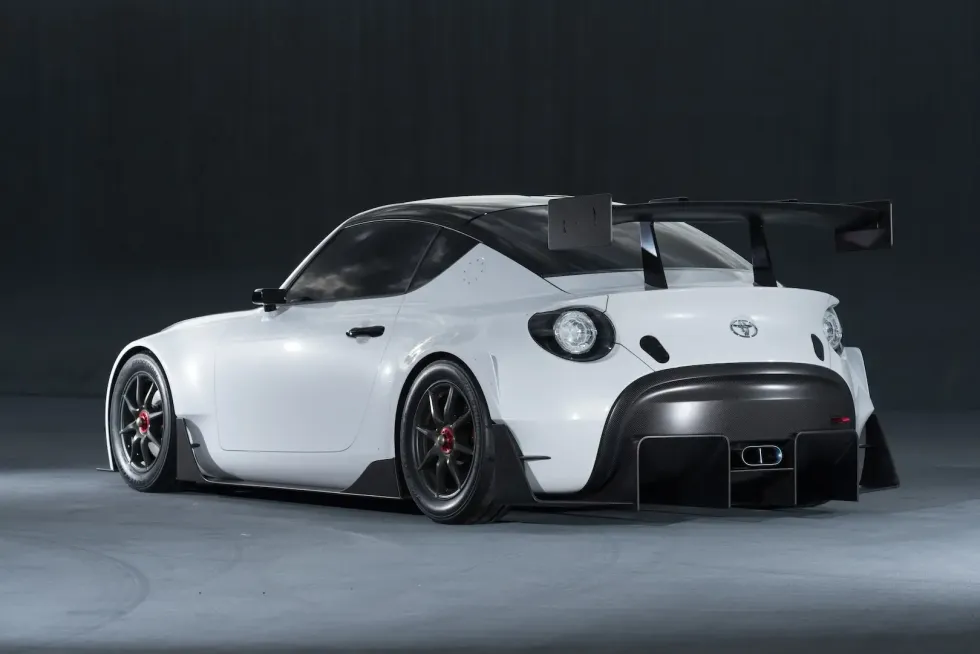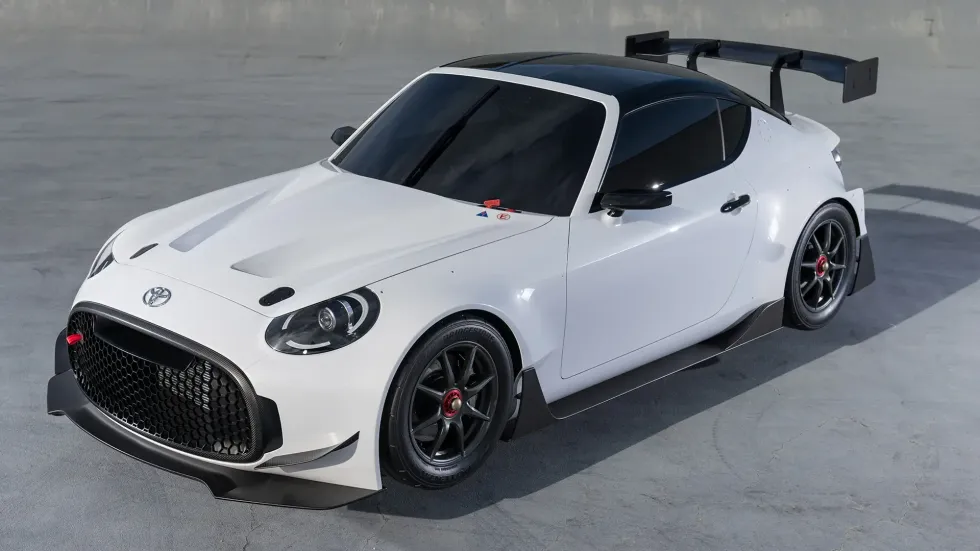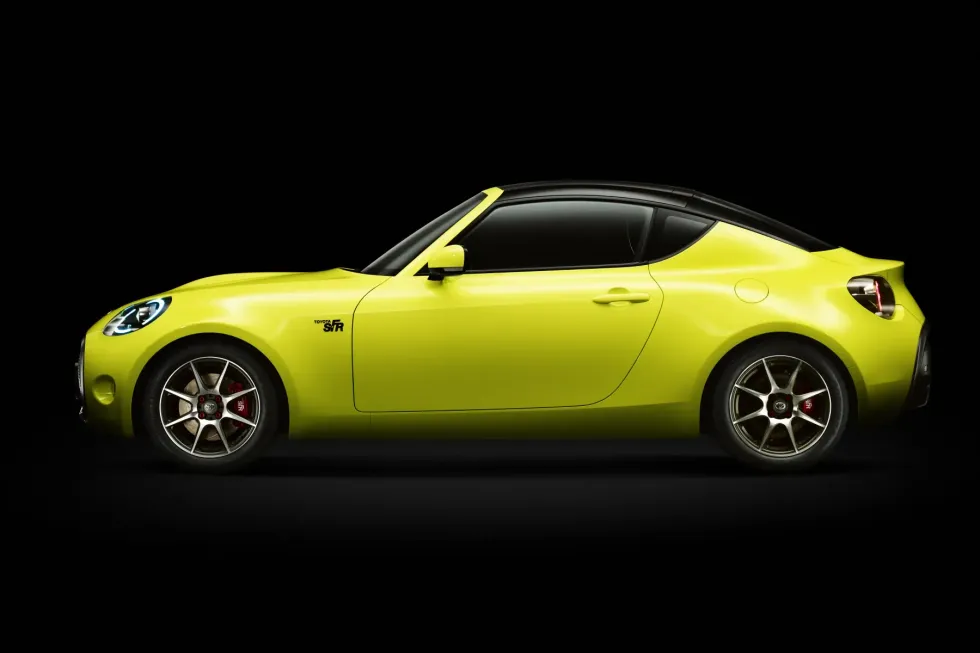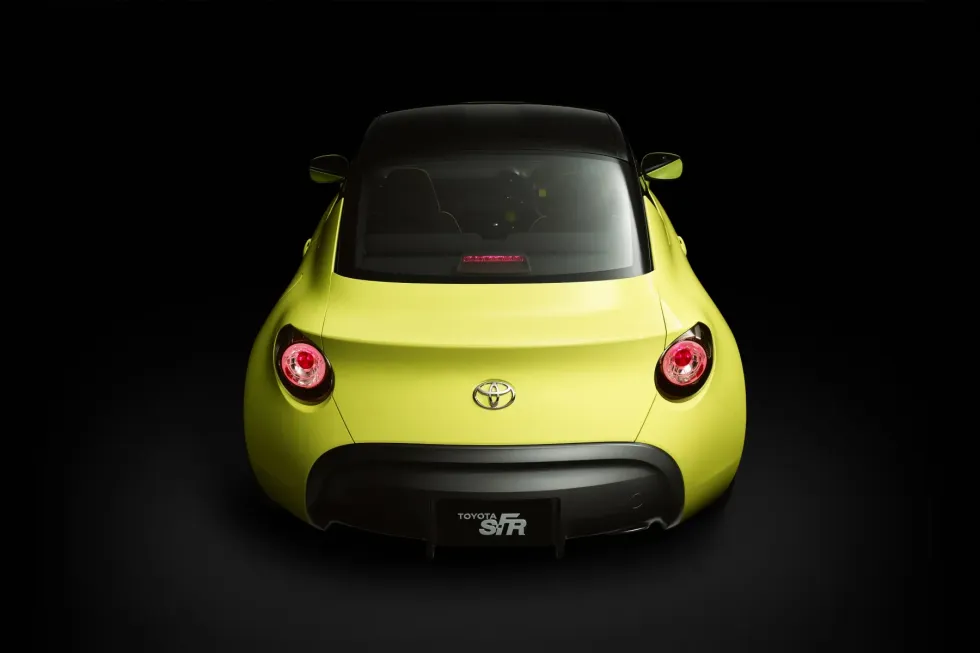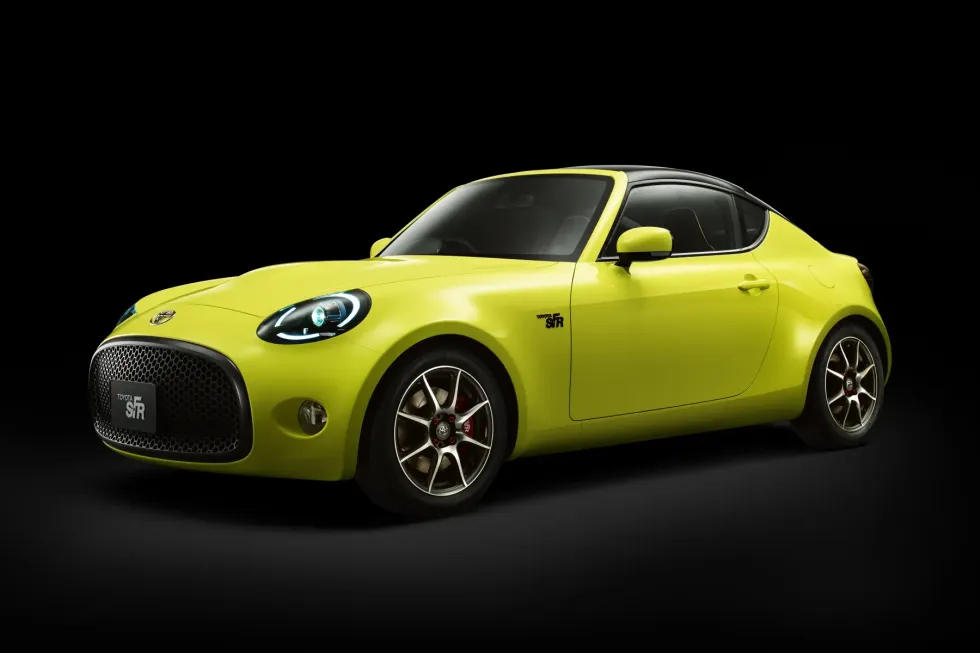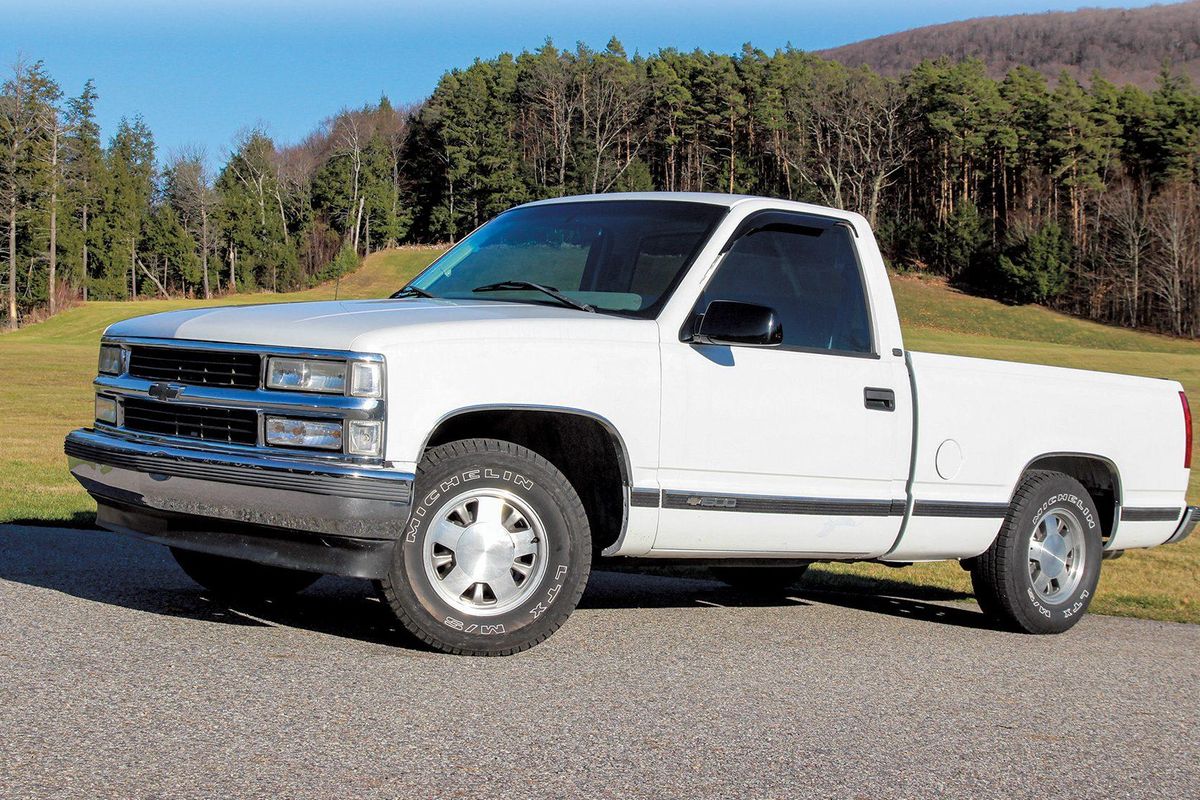
Buy
Resources
Entertainment
Magazine
Community
As the humble pickup truck's place in American culture steadily evolved from simple-but-valued tool to modern fashion statement, it gained a huge fan base. While admiration grew and trucks aged, restorers began returning some of them to showroom shape. Meanwhile, hot-rodders and customizers crafted their own interpretations of the classic pickup.
The years rolled on and certain models emerged as favorites, spawning a vast aftermarket blooming with reproduction and upgrade parts and kits. So widespread is this enthusiasm for classic pickups today that values of the most popular models have swelled substantially during the past decade or so. It's good news if you already have one, but not so great for anyone on the hunt for a budget-friendly alternative to pony cars or muscle machines.

Consider the 1967-'72 Chevrolet trucks, popular from new and long adored by enthusiasts. Today, they're nearly as sought after as the muscle cars of the same era, and values have followed suit, making them less accessible to the younger builders trying to get into a vintage project. More recently, the following generation of Chevy trucks— the 1973-'87 "square-body" era—has been following the same trajectory, with values escalating rapidly.
So, where does that leave the aspiring young builder on a budget? Or even the seasoned tinkerer looking to start a new project with a casual cash commitment? Fortunately, GM kept right on building pickups, and its next generation proved to be a winner.


For the 1988 model year, GM introduced a new line of light trucks under the internal designation "GMT 400." To the public, the new generation of trucks was often referred to as the "C/K" series, combining the familiar C designation of two-wheel-drive models with the K of 4x4s. The new C/K line offered increased interior space, while appearing leaner and more svelte on the outside thanks to a "cab forward" design with a sloping hood and rounded prow. This was the first time GM had offered extended-cab variations on its pickups, and the traditional "step-side" bed was finally replaced with a new fiberglass Sportside interpretation.
Viewed today, the GMT-400 era of trucks was an excellent blend of then-modern technology merged with traditional pickup dimensions. Though some details are very of-the-period, like the mini quad headlamps of the earlier models and the plasticky dark-argent egg-crate grilles, GM's stylists smoothed out many of the trim details as the generation evolved, and overall these trucks have aged well. Park a GMT 400 next to a 1967-'68 Chevy pickup and you might even wonder if GM's stylists looked back for inspiration.

All GMT-400 trucks left the factory with electronic fuel injection of some sort, they all had front disc brakes, and the vast majority had transmissions featuring overdrive, whether automatic or manual. The GMT-400 trucks were engineered to hold the road like no trucks that had come before.
Today, those features, and the C/K's relatively trim size (compared to contemporary full-size pickups), make these trucks great drivers. Plus, since these are often cited as the generation of pickups that launched the full-size sport-truck movement, the aftermarket is teeming with parts. They've even picked up their own nickname: "OBS," for old body style.

But perhaps best of all, the 1988-'98 GM C/K trucks are affordable and readily available, making them perfect project fodder. That's what one of our local friends, Glen Sauer, realized when he was looking for a new truck project for his young son. Glen is a longtime fan of the 1967-'72 Chevy trucks, having built several over the past 30-some-odd years since he started as a teen; he's got another going together right now. That's how he knew it wouldn't be feasible to get another example from that period to serve as a fun fixer-upper that could also provide legitimate transportation on a short budget.
However, when a friend came up from the Carolinas with a pair of '97 Chevy C1500 short-beds, Glen knew he'd found his next project. The one he bought is the classic sport-truck builder's favorite: a short-bed Fleetside with a standard cab and two-wheel drive.

"I probably paid all the money for this thing, but it was so clean I didn't mind," Glen says of the purchase. But for one of these trucks right now, "all the money" was still less than $6,500, and it runs, drives, and even has decent paint. Living in Vermont, Glen is painfully familiar with the effects of long winters and the heavy doses of road salt that accompany them. Typical OBS Chevy trucks from this area are now significantly rotted, their chassis often heavily scaled and held together with fasteners that are all fused from corrosion. But the '97 from the South hasn't the slightest trace of that.
"It's got a lot of miles, and the interior was whooped, but I'm not worried about any of that," offers Glen. The drivetrain in this truck is the 5.7-liter Vortec V-8, which Chevy started using the model year prior. This was the engine that got the updated "fast-burn" cylinder heads that became popular with hot rodders soon after, for the components' performance and low cost. The engine is backed up by the 4L60E four-speed automatic. Both seem to function just as they should in spite of the more than 200,000 miles showing on the odometer.

The restoration parts aftermarket for the OBS is still in its infancy, but that's okay for now—those rusty northeastern trucks all around us make excellent interior donors for the dried-out southern and western examples. Glen's been picking through area junkyards for some of the items needed, but then came up with two different parts trucks. Each one provided lots of interior bits and some other trim, but one of them also had another key contribution.
"I really want this truck to have a manual gearbox," Glen says. "For one, it's just cooler, but I also want my son to have his hands full when he starts driving—if he's got the steering wheel in one hand and the shifter in the other, he won't be able to mess around with his phone while he's driving."

Interesting logic, and a plan that the second parts truck will facilitate by providing a complete two-wheel-drive, five-speed-manual setup. In addition to the gearbox itself, Glen scavenged the pedal set, steering column, hydraulic clutch linkage, floor boot, transmission crossmember, driveshaft, and even the wiring harness and powertrain control module.
That truck also had a good gray interior, which is what Glen wanted to replace the worn-out stuff the '97 came with—the blue gut on a white truck isn't his style anyway. For now, the used interior will be cleaned, patched by a local upholster as needed, and pressed back into service. Down the road, when the budget allows, another set of donor buckets will be reupholstered in aftermarket leather covers. The gray dash from a donor is also being swapped over, and a good salvaged headliner "card" has already been covered in factory-style gray cloth.

Here's another aspect of the OBS trucks we hadn't counted on: The two parts trucks—the five-speed C1500 extended cab and a C3500 1-ton crew cab that was wrecked, rotten, and already relieved of its big-block and 4L80E automatic—have both been sold off after being plucked, for more than Glen had paid for them. That means all of the scavenged parts were essentially free. You can't do that with a 1967-'72 anymore.
The first order of business is to swap the interior, including the manual transmission's pedals and steering column—we'll detail that in next month's issue. Then we'll follow up with the five-speed swap, and finally, some new wheels and tires and a little suspension updating to yield a cool, low-buck daily-driver Chevy pickup.
Recent
Toyota
Toyota is pulling out all the stops to compete with the likes of affordable sports cars like the Mazda Miata. The automaker reportedly plans to put the S-FR concept car, originally debuted in 2015, into production. With potential release dates slated for early-2026 or early-2027, perhaps Miata may not always be the answer.
A new report out of Japan confirmed that the Toyota S-FR concept, first seen at the 2015 Tokyo Motor Show, will hit the market to challenge the entry-level sports car segment. Forbes backs up this claim via its print edition of Best Car. According to the report, the Toyota S-FR will be produced in partnership with Daihatsu, a wholly owned subsidiary of Toyota, and Suzuki, of which the Toyota Motor Corporation owns 4.94 percent.
From the sounds of it, the S-FR will share a platform with the Daihatsu Vision Copen that was revealed at the 2023 Tokyo Mobility Show. It will supposedly feature the same two-plus-two seating as displayed in the concept, but will be even smaller and lighter than the Toyota 86 model.
The Toyota S-FR will reportedly get its power from a turbocharged three-cylinder engine that will send around 150 horsepower to the rear wheels. If these figures sound familiar, you may have also heard the rumors about Toyota reviving the Starlet with a GR performance version that has similar specs; a 1.3-liter engine producing 150 horsepower.
Like most concept cars, the S-FR’s design will see some changes before production, in this case reports point specifically to a smaller grille and altered headlights. Whether or not the production model will incorporate the concept’s aero elements is unknown.
Toyota’s target MSRP of $22,700 for the S-FR could potentially beat out the Mazda Miata by around $6,000. Whether or not the S-FR will be sold in the States to potentially compete with Toyota’s existing GR86 model’s sales is also, sadly, unknown, but we have our fingers crossed.
Keep reading...Show Less
What if I told you that not all muscle cars are from Detroit? No, I’m not talking about any of the rebellious machines from Kenosha. I’m talking about Newport Pagnell. Where exactly is Newport Pagnell you ask? It’s about 50 miles northwest of London, and the traditional home of Aston Martin, where thousands of its cars were built between the mid-1950s through 2007. Let’s take a look at this 1978 Aston Martin V8 Series 3 currently offered on Hemmings Auctions as a prime example of a non-Detroit muscle car.
How does the AMV8 stack up as a muscle car? Let’s count the ways: It’s got a booming, high-performance V8 under the hood that sends power to the rear wheels—and the rear wheels only. It’s a two-door coupe with a long hood and a fastback roof. It has a big hood scoop needed to clear a quartet of Weber two-barrel carburetors. It even has a Chrysler TorqueFlite automatic transmission for that authentic Yankee feel.

Rather than a lightweight sports car, the Aston Martin V8 is better considered a GT car, which seems to have a lot in common with American muscle cars. Even with aluminum body panels, the rather substantial Aston had a curb weight just a hair over 4,000 pounds, making it several hundred pounds heavier than a 1969 Dodge Charger R/T. It’s worth noting that despite being measurably smaller than the Charger, both cars share very similar proportions, with their long hoods, fastback rooflines, and short rear decks. An even closer comparison comes in the form of a ‘67 Ford Mustang, again with similar proportions but also the Aston having a wheelbase and overall length, width, and height very close to the American pony car.
The 1978 Aston Martin V8 is frequently referred to as a Series 3 since it was derived from the DBS, a model that launched in 1967 with an inline-six engine that was followed by the DBS V8, with a fuel-injected V8 engine. Both versions of the DBS were sold alongside each other into 1972, when, during the model year, the simply named V8 model supplanted both. With an updated front end that included a grille shape more reminiscent of Aston Martins past and a pair of headlamps rather than four, these interims V8s were considered Series 2 cars.

In 1973, Aston Martin dumped what had turned out to be a problematic mechanical fuel-injection system, instead opting for four Weber carburetors for its 5.3-liter V8. Multiple carburetion gives it good company with the likes of a Mopar 440 Six-Pack or Pontiac Tri-Power. That carburetor setup required additional hood clearance that resulted in the large scoop worn by such cars, though it was non-functional in terms of letting in any additional air to the intake.
The rest of the engine department takes a big departure from the standard American iron-block, overhead-valve setup. Aston Martin’s V8 featured all-aluminum construction and dual overhead camshafts on each cylinder head, driven by dual chains. Yes, it had hemispherical combustion chambers, even with just two valves per cylinder. Engineers specced a forged crankshaft and forged chrome-moly connecting rods.

Output for 1978 was estimated at 310 horsepower and 320 lb-ft of torque—pretty substantial numbers for a car built during the oil crisis era and before engineers had leveraged electronic fuel injection to win the battle against emissions regulations. In accordance with its muscle car vibe, most AM V8s of the period were equipped with a TorqueFlite three-speed automatic, complete with Mopar factory ratios of 2.45:1, 1:45:1 and 1:1, along with a limited-slip rear differential. A 3.31 final-drive ratio was standard, with 3.54:1 optional. A five-speed manual was available.
Distinctions from Detroit grow once you step inside an Aston Martin V8, which was essentially a handmade car, with very low production numbers. Each of the four seats was covered in leather, a material that extended to the door trim, steering wheel, shift knob and even the center console surround. Carpets were wool. Given its high price and object of luxury aspirations, each car was also packed with plenty of sound insulation to isolate occupants from road noise. Power assistance for the brakes and steering was standard, as were air conditioning, power windows and power locks.

With a 0-60 mph time of “about six seconds,” according to Aston Martin literature of the time, along with a top speed over 150 mph, the AM V8 was in nearly a class by itself. Torque wasn't quite like that of an unrestrained big block American V8 from the peak muscle car era, but the Aston Martin’s V8 engine still delivered power with a swift rush towards a redline over 5,000 rpm, though no such actual red line is indicated on the tach. Suspension included unequal-length control arms up front with an anti-roll bar and De Dion rear axle with parallel trailing arms and watt linkage in the rear. Coil spring were at all four wheels, as were disc brakes, with the rear disc inboard. Not designed to tackle a tight road course, the AM V8 was still noted as a competent high-speed handler.
This 1978 Aston Martin V8 Series 3 features a silver metallic body with a red leather interior. The selling dealer indicates that it was purchased from the second owner who it is believed purchased it from the original owner as he aged out of driving in his 90s. The car appears to have been very well maintained, with the seller sharing that the engine, transmission, paint, body and interior are all “highly original.”

Other information to note on this AMV8 are a slew of services performed last fall, including a “full tune-up,” rebuilt carburetors, new spark plugs and filters, new battery and an alternator rebuild. Everything is asserted to be functioning properly with the car seemingly ready to drive anywhere.
As one of less than 1,000 Series 3 examples made, this 1978 Aston Martin V8 coupe offers a uniquely British take on big V8 performance in a midsize car—a muscle car, but with a different accent.
Head on over to Hemmings Auctions and take a closer look for yourself.
Keep reading...Show Less


